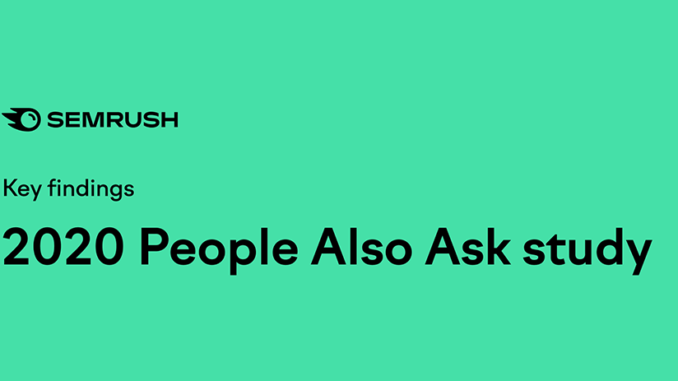
Another way to go about this is to observe the PAA boxes on display on the first page and create a list of questions. But randomly choosing questions is ineffective and may cost you a lot of time.
You may end up with low-volume search queries. In any case, if you rank for these low-volume queries, it won’t get your website the much-needed exposure.
Since you’re trying to rank for high-volume search queries, you want to search for relevant questions, relevant keywords, and a high search volume.
If these questions already rank on PAA, then note the related questions in the drop-down display and build your next set of keywords to target around it.
Develop Quality Content That Caters to Those Questions
While it is possible to rank for Google’s PAA (or featured snippets) by creating an FAQ page that caters to multiple questions, you’ll get better results by creating single pages for each question.
Google loves long-form content. When you’re creating these pages, make sure your title tag and main heading all have the target keywords as questions.
Be careful of fluff, though, so you don’t end up with lots of unnecessary information in your content since you’re expatiating on one or a few questions.
To avoid this, however, you can discuss related topics to the central question you’re targeting.
Optimize Your Website for SEO
Just creating long-form content, though, will not trigger a PAA SERP feature. To increase your chances, address a specific query extensively from an SEO perspective.
Another name for this is on-page optimization. On-page optimization will do two things for you.
Since addressing your customers’ search needs is the basis of any SEO activity, you can quickly rank for PAA by having a clear SEO strategy that gives you an edge over traditional SERP listings.
One terrific strategy is having your content optimized for Google’s Rank Brain.
Rank Brain’s core purpose is understanding queries through natural language. Google uses the rank brain algorithm to analyze entities in content and build knowledge graphs that match users’ search requirements.
Having your website included in this graph as a source of knowledge for users is a definite PAA strategy that increases your visibility on Google’s SERP.
Format Your Content to Meet Google’s Expectations
Another important guideline to follow is to format your content in a way that Google expects.
It’s simple. If you’re asking and answering a question like “where are the best places to shop these holidays?” It’s clear Google expects content in a list format – give it to them.

Leave a Reply